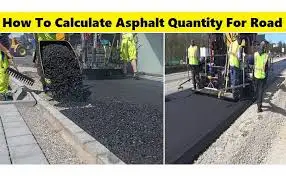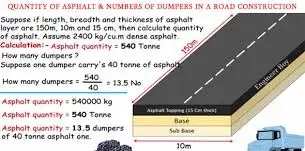
HOW TO CONSTRUCT A ROAD
- amixan

- May 17, 2021
- 4 min read
patch of dirt nearby, it can be so much fun to build your own roads for your cars to drive on. All you need is a rock or a toy shovel to clear a path for your cars to speed down like a highway. It might be easy to make pretend roads for toy cars, but real roads for real vehicles are a lot more difficult to build. Although rocks and real shovels are often involved, it takes quite a few people and a lot of special equipment to build a real road. The first step in building a road is planning. Many people, including engineers and construction experts, must be involved in figuring out what type of road should be made — and what it should be made from — depending upon the amount and type of traffic it will likely see. Even simple roads can take months of planning before construction can begin. Complex roads that involve different structural elements, such as bridges or overpasses, can take years to plan. Other factors that planners must consider include environmental impact of the road, cost, availability of materials, and safety. Toward the end of the planning phase, surveyors and construction experts will develop solid plans for the road to be built. If part of the land to be used for the road is owned by private parties, lawyers and government officials will need to negotiate the purchase of pieces of property to be used for the road. Public meetings will also often be held, so that any citizens with concerns about the road construction project can voice their opinions. The local, state, or federal governmental entities building the road will also solicit construction bids from a variety of contractors to make sure that the road can be built as economically as possible. Once bids are compared and a contractor is selected, construction can finally begin! Depending upon the size of the road project, construction can take from a few weeks to several years.
The first part of construction is one of the most important: earthwork. Huge earth-moving machines must be used to create a solid foundation for the road to be built. Without a solid foundation, any road that is built will fail long before its expected lifespan. Bulldozers and graders move around dirt delivered by dump trucks to create a level surface that will support a road for many years to come. Gravel is added in layers and machines roll over the surface to compact and flatten it further. Drains and storm sewers are also installed at this early stage, so that rain will drain away from the road surface and make it easier for vehicles to travel in storms. Once the foundation is finished and has been inspected, it's time to pave the way! The most common materials used for paving roads are asphalt and concrete. Factors such as cost and type and amount of traffic will determine which material will be used. Asphalt uses an oil-based substance called bitumen to make sand and crushed rock stick together like glue. After the asphalt is heated to about 300° F, it is transported to the construction site, where construction crews spread and compact it onto the foundation already in place. Concrete also uses sand and crushed rock, but it's held together with cement. Workers must pour liquid concrete into special steel molds called forms. As it dries, a special finishing machine vibrates it to make it settle evenly and then trims it to the correct height. To prevent cracks, workers make cuts — called joints — between concrete slabs. These joints allow the concrete slabs to expand and contract with changes in temperature without breaking.
Wonder What's Next?
Tomorrow’s Wonder of the Day may be curly or straight!
Isn't it amazing how much planning, work, and science goes into something like a road that we drive over every day and probably take for granted? Keep the learning going by exploring the following activities with a friend or family member:
What kinds of roads are there in your area? No, we're not talking about streets, county roads, highways, and interstates. We want you to explore what types of building materials make up the roads in your area. Can you find asphalt roads? What about concrete roads? Ask an adult to drive you around the area where you live to look for the different types of road construction you can find. If possible, drive to a rural area with no traffic. Get out and examine a section of road. Pay particular attention to the edges of the road. Can you see the layers it's composed of? Can you find any areas that need repair?
Did you know that making asphalt is kind of like baking a cake? You need the right amounts of the proper ingredients, and then you need to mix them and heat them up! Learn more about the process of making asphalt by taking a virtual Asphalt Plant Tour! Wouldn't it be cool to see asphalt being made up close? What do you think hot asphalt smells like? Have you ever been riding in an automobile on a highway on a hot summer day when a road was being repaired? If so, you may have smelled hot asphalt already. If you've ever smelled it, how would you describe it to a friend or family member?
Building a road in good weather can be time-consuming and difficult enough. Now imagine building a road in poor weather conditions. Grab a friend or family member and check out the How To Build a Road interactive from PBS. It takes a closer look at the building of the Alaska Highway. The Alaska Highway travels through northwestern Canada and Alaska. It's located in the discontinuous permafrost zone. In some places, the soil is frozen solid. In others, it's boggy. Frozen ground, swamps, and constantly changing temperatures forced construction crews to come up with innovative new solutions to problems created by geology and weather. Enjoy learning about how Army engineers fought nature to build a highway through the wilderness. DID YOU GET IT?




















Comments